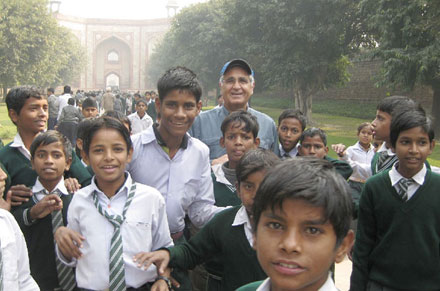
abstrct: India calls its capital New Delhi. The “new” part is in fact only a 1930s addition to the 17th century Mughal metropolis of Shahjahanabad. This was an incongruous grafting of Imperial Britain’s urban concepts of order, space, trees, and quiet onto an Indian city of chaos, crowds, dust, and noise. The integration has been more a process of encroachment by the latter in the midst of the struggle by both parts to cope with the requirements of modern times. In the resulting amalgamation, Old Delhi remains not just as an anthropological museum, but a crucial part of the heart and soul of a community which is now largely Hindu but has evolved from several Muslim cities dating back to the early 13th century. In the monuments and ruins of those cities I looked for the history that might shed light on what is contemporary Delhi. []






